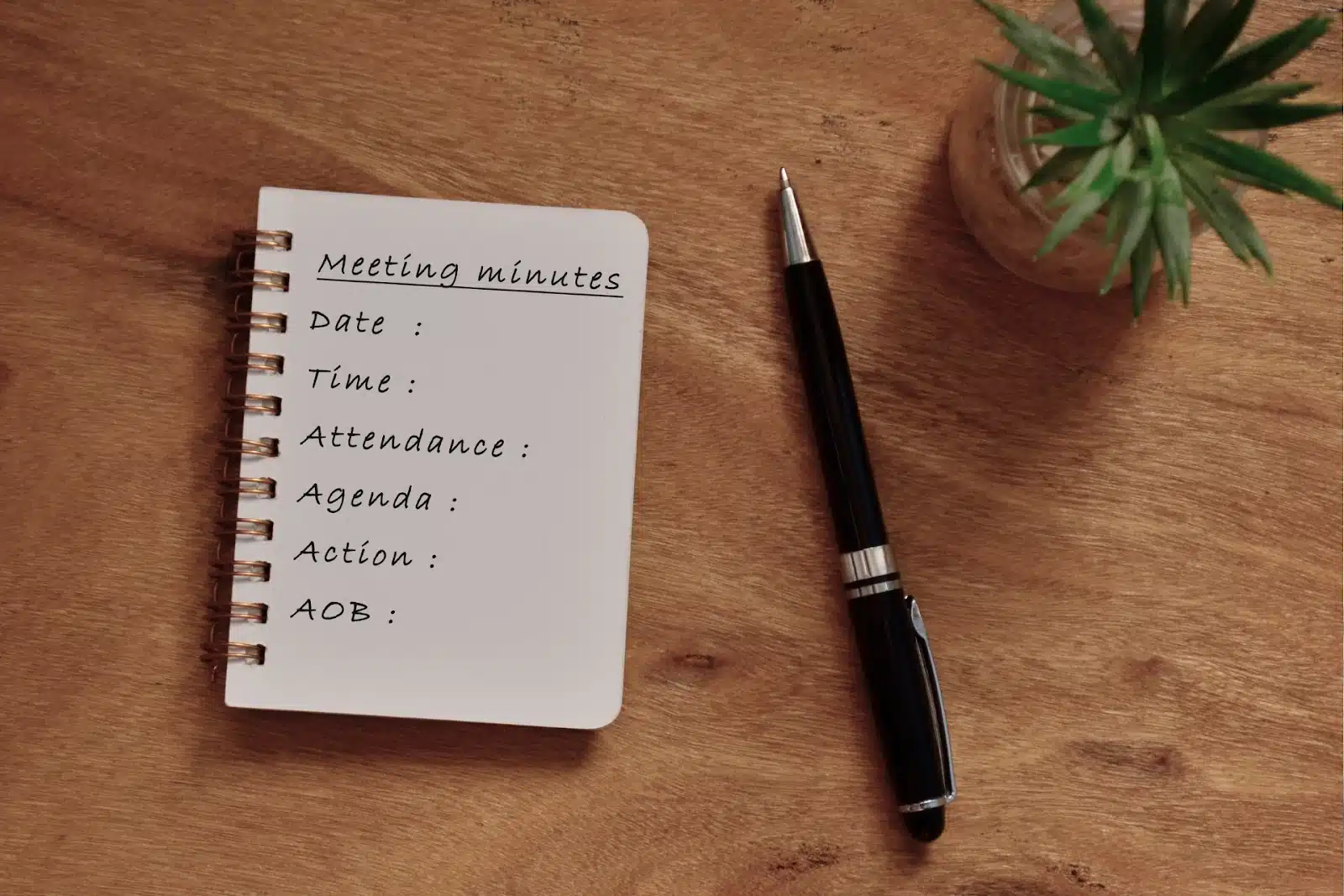
Board Minutes Templates That Keep Everything Organized
Board meetings are a crucial aspect of any organization, serving as a platform for decision-making, strategic planning, and accountability. However, the effectiveness of these meetings often hinges on the quality of the documentation that follows, specifically, the board minutes. Well-organized board minutes not only capture the essence of discussions but also ensure that action items are tracked and responsibilities are clear. This article explores various board minutes templates that can help streamline the process, making it easier for organizations to maintain clarity and organization in their meetings.
The Importance of Well-Structured Board Minutes
Board minutes are more than just a record of what was discussed; they serve as an official account of the decisions made and actions agreed upon during meetings. This documentation is essential for several reasons. First, it provides a historical record that can be referenced in future meetings, ensuring continuity and accountability. Second, it helps to clarify any ambiguities regarding decisions made, reducing the likelihood of misunderstandings.
Moreover, well-structured minutes can enhance transparency within the organization. Stakeholders, including team members and external partners, can refer to these documents to understand the rationale behind decisions, fostering trust and collaboration. In essence, effective board minutes contribute to a culture of accountability and open communication. They also play a crucial role in legal contexts, as they can serve as evidence of compliance with regulations and organizational policies, protecting the organization from potential disputes or claims.
Furthermore, the practice of maintaining thorough board minutes encourages a disciplined approach to governance. When board members know that their discussions and decisions will be documented, they are more likely to prepare adequately and engage thoughtfully in the meeting process. This proactive mindset can lead to more productive discussions and better decision-making overall, as members feel a sense of responsibility for the outcomes of their deliberations.
Key Components of Effective Board Minutes
To ensure that board minutes are both comprehensive and clear, certain key components should always be included. These typically encompass the date and time of the meeting, a list of attendees, and a summary of discussions and decisions made. Additionally, it is important to document any action items, including who is responsible for each task and deadlines for completion.
Another critical aspect is the format of the minutes. A consistent structure not only aids in readability but also makes it easier to locate specific information later. Utilizing templates can significantly streamline this process, allowing for quick adjustments based on the unique needs of each meeting. Including headings and bullet points can also enhance clarity, making it easier for readers to scan through the document quickly. Moreover, incorporating a brief overview at the beginning of the minutes can provide context for those who may not have attended the meeting, ensuring that all stakeholders remain informed and engaged with the organization’s activities.
Types of Board Minutes Templates
Choosing the right template can make a significant difference in how effectively board minutes are recorded and communicated. Below are several types of templates that organizations can consider, each tailored to different needs and preferences.
1. Standard Board Minutes Template
This template is the most commonly used format, providing a straightforward structure for recording essential information. It typically includes sections for the meeting’s date, time, location, attendees, and a detailed account of discussions and decisions. This template is ideal for organizations looking for a no-frills approach that still captures all necessary details.
Using a standard template helps ensure that all relevant points are covered consistently, making it easier for participants to follow along and for absent members to catch up later. Additionally, this format can be easily adapted for different types of meetings, whether they are regular board sessions or special meetings. The simplicity of the standard template also allows for quick updates and revisions, which can be particularly useful in fast-paced environments where decisions need to be documented and disseminated promptly.
2. Action Item-Focused Template
For organizations that prioritize follow-up and accountability, an action item-focused template can be particularly beneficial. This format emphasizes tracking decisions and the corresponding action items, clearly outlining who is responsible for each task and the deadlines for completion.
This template not only aids in organization but also ensures that nothing slips through the cracks. By highlighting action items, organizations can foster a culture of accountability and ensure that decisions made during meetings translate into tangible outcomes. Furthermore, this template can serve as a motivational tool, as team members can visually track their progress on assigned tasks, leading to increased engagement and a sense of ownership over their responsibilities.
3. Visual Board Minutes Template
In today’s fast-paced environment, visual aids can enhance understanding and retention. A visual board minutes template incorporates graphics, charts, and other visual elements to present information in a more engaging manner. This format can be particularly useful for presentations to stakeholders who may prefer a more dynamic approach to information sharing.
Visual templates can include infographics summarizing key decisions and timelines, making it easier for attendees to grasp complex information quickly. This approach not only makes the minutes more engaging but also caters to different learning styles, ensuring that all participants can follow along effectively. Additionally, incorporating visuals can help to highlight trends and patterns that may not be immediately obvious in text-based formats, allowing board members to make more informed decisions based on a clearer understanding of the data presented.
Tips for Creating Effective Board Minutes
While templates provide a solid foundation, the effectiveness of board minutes ultimately depends on how they are crafted. Here are some tips to enhance the quality of your documentation:
4. Be Concise and Clear
Effective board minutes should be concise yet comprehensive. Avoid unnecessary jargon and focus on capturing the essence of discussions and decisions. Aim for clarity to ensure that anyone reading the minutes can easily understand the key points without needing additional context.
Using bullet points or numbered lists can help break down complex information into digestible segments, making it easier for readers to follow along. This approach also allows for quick reference when looking for specific details later on. Additionally, consider highlighting action items or decisions made during the meeting in bold or italics to ensure they stand out, making it easier for readers to identify critical points at a glance.
5. Use a Consistent Format
Consistency is key when it comes to board minutes. Adopting a uniform structure helps all participants know what to expect and makes it easier to locate information across different meetings. This consistency can also aid in training new team members who may need to familiarize themselves with the documentation process.
Consider establishing a style guide that outlines the preferred format, including font size, headings, and any specific terminology to be used. This guide can serve as a valuable resource for anyone involved in the documentation process. Furthermore, incorporating a table of contents for longer minutes can enhance navigability, allowing readers to quickly find the sections they are most interested in without having to sift through pages of text.
6. Review and Revise
Before finalizing board minutes, it is essential to review and revise the document for accuracy and completeness. This step can involve cross-referencing with the meeting agenda and ensuring that all key points have been captured. Additionally, it may be beneficial to have another team member review the minutes to catch any errors or omissions.
Timely distribution of the minutes is also crucial. Aim to circulate the finalized document shortly after the meeting while the discussions are still fresh in participants’ minds. This practice not only reinforces accountability but also encourages prompt follow-up on action items. Moreover, consider implementing a feedback loop where board members can provide input on the minutes, fostering a culture of collaboration and continuous improvement in the documentation process. This approach can also help in identifying areas where discussions could be more effectively captured in future meetings.
Leveraging Technology for Enhanced Documentation
In today’s digital age, leveraging technology can significantly enhance the process of documenting board minutes. Various tools and software are available that can streamline the documentation process, making it easier to capture, organize, and share information.

7. Digital Note-Taking Tools
Digital note-taking tools allow for real-time documentation during meetings, enabling participants to capture discussions as they happen. These tools often come with features such as voice recognition, collaborative editing, and cloud storage, making it easy to access and share minutes with team members.
Many of these applications also offer templates specifically designed for meeting minutes, allowing users to quickly format their notes according to established standards. This can save time and ensure consistency across different meetings. Furthermore, some advanced note-taking tools utilize artificial intelligence to summarize discussions and highlight key points, which can be particularly beneficial for busy executives who may not have time to read through lengthy documents.
8. Project Management Software
Integrating board minutes with project management software can enhance accountability and tracking of action items. By linking minutes to specific tasks within a project management platform, organizations can easily monitor progress and ensure that responsibilities are being met.
This integration can also facilitate communication among team members, as they can comment on action items and provide updates directly within the platform. This collaborative approach fosters a sense of ownership and encourages timely follow-up on decisions made during meetings. Additionally, many project management tools offer analytics features that can help teams assess the effectiveness of their meetings by tracking how many action items are completed on time, thus providing valuable insights for future improvements.
9. Cloud-Based Document Sharing
Cloud-based document sharing platforms enable easy access to board minutes from anywhere, ensuring that all stakeholders can stay informed regardless of their location. These platforms often come with version control features, allowing organizations to maintain a clear record of changes made to the minutes over time.
Additionally, cloud-based sharing facilitates collaboration, as team members can provide feedback and suggestions directly on the document. This real-time collaboration can lead to more accurate and comprehensive minutes, ultimately enhancing the effectiveness of the documentation process. Moreover, many cloud services incorporate security measures such as encryption and access controls, ensuring that sensitive information remains protected while still being readily accessible to authorized personnel. This balance of accessibility and security is crucial for maintaining trust and transparency within an organization.
Elevating Board Meeting Effectiveness
In conclusion, well-organized board minutes are essential for effective governance and accountability within any organization. By utilizing structured templates, adopting best practices, and leveraging technology, organizations can elevate their documentation process, ensuring that meetings are productive and outcomes are clearly communicated.
Whether opting for a standard template, focusing on action items, or incorporating visual elements, the key is to maintain clarity and consistency throughout the documentation process. By prioritizing effective board minutes, organizations can foster a culture of transparency, accountability, and collaboration, ultimately driving better decision-making and outcomes.
Enhance Your Board Meetings with PresEngage
Ready to take your board meetings to the next level? With PresEngage, you can ensure every participant’s voice is heard through our AI-powered SMS Q&A platform. Say goodbye to the barriers of traditional Q&A sessions and embrace real-time, app-free interaction that keeps everyone engaged. Perfect for presenters, educators, and professionals, PresEngage is designed to make your meetings more interactive and productive. Start for FREE and transform your board meetings into dynamic, inclusive discussions where every question counts.
Present Smarter. Engage Answer Convert Close Remarkably.
Dazzle your audience with Real-Time Q&A powered by your AI Co-Presenter.(Patent Pending)
PresEngage™ makes you look brilliant by connecting with everyone, instantly.
No Credit Card Required. 100% Risk Free.
Frictionless Audience Experience GUARANTEED.






